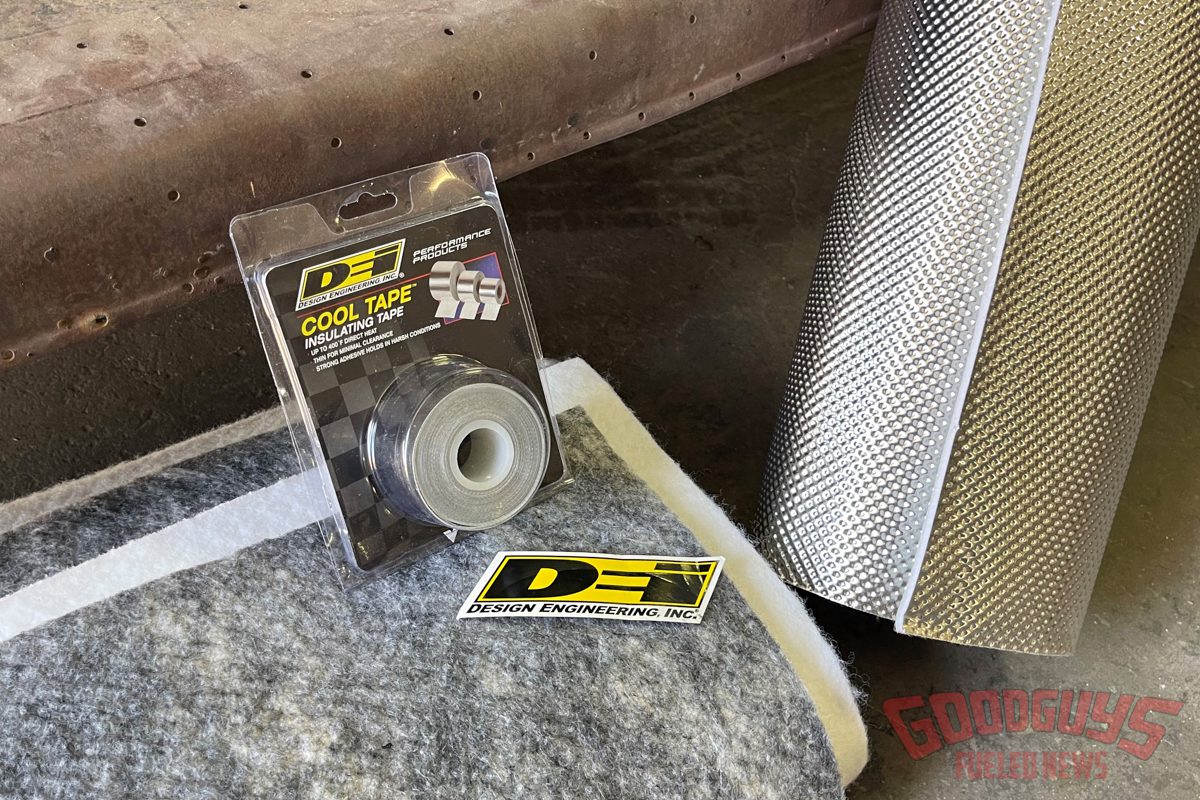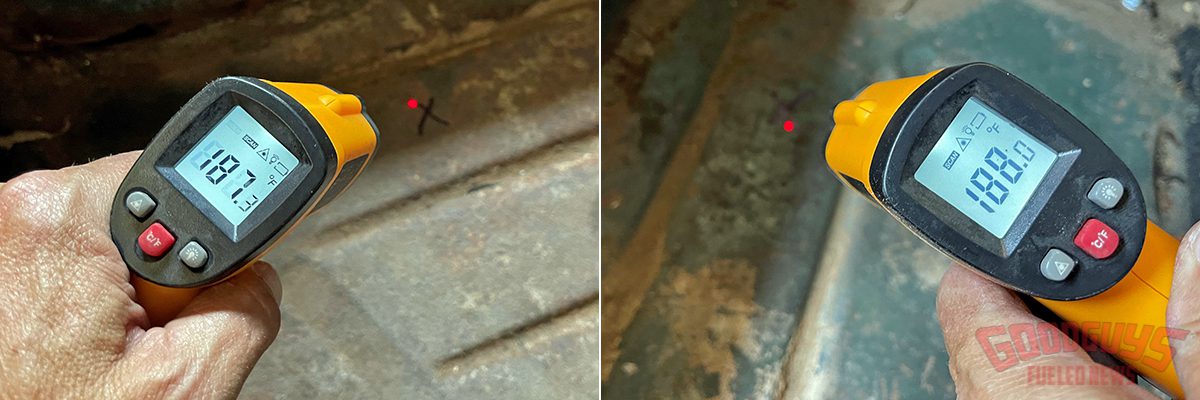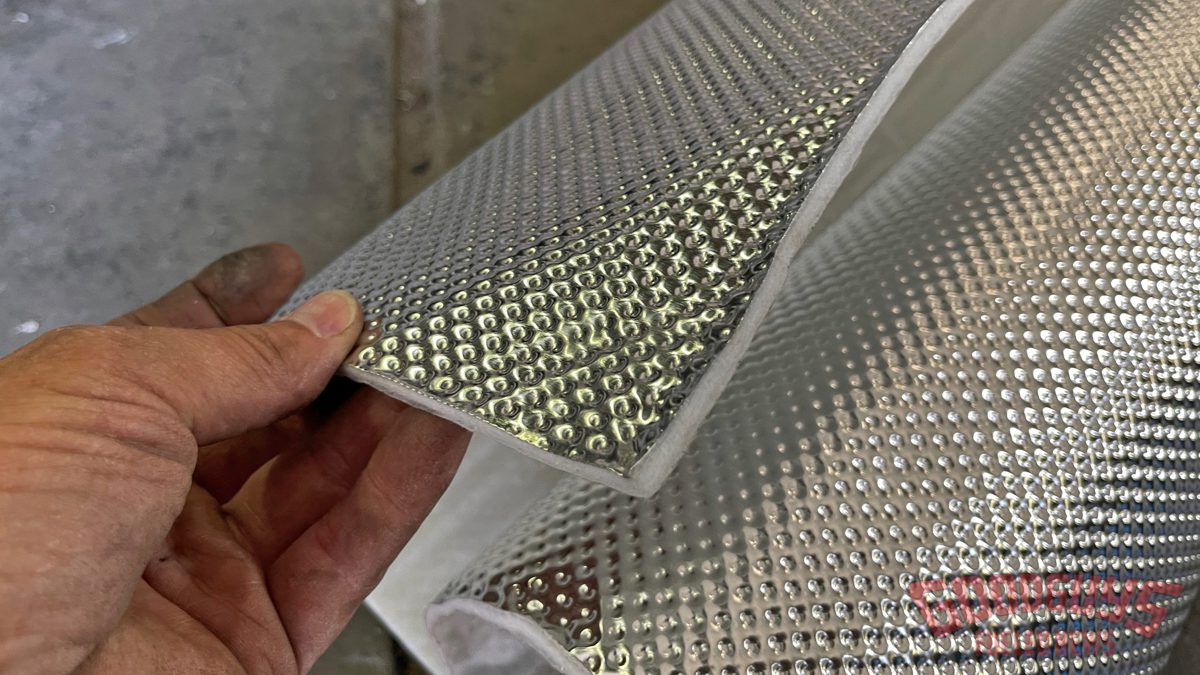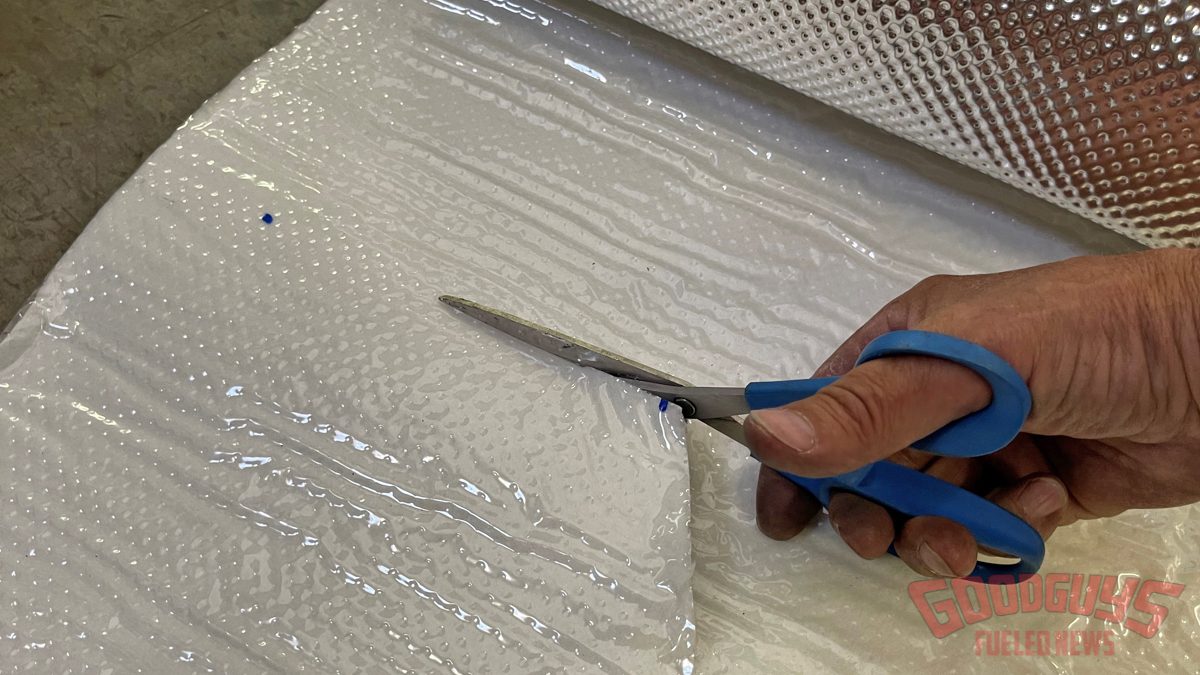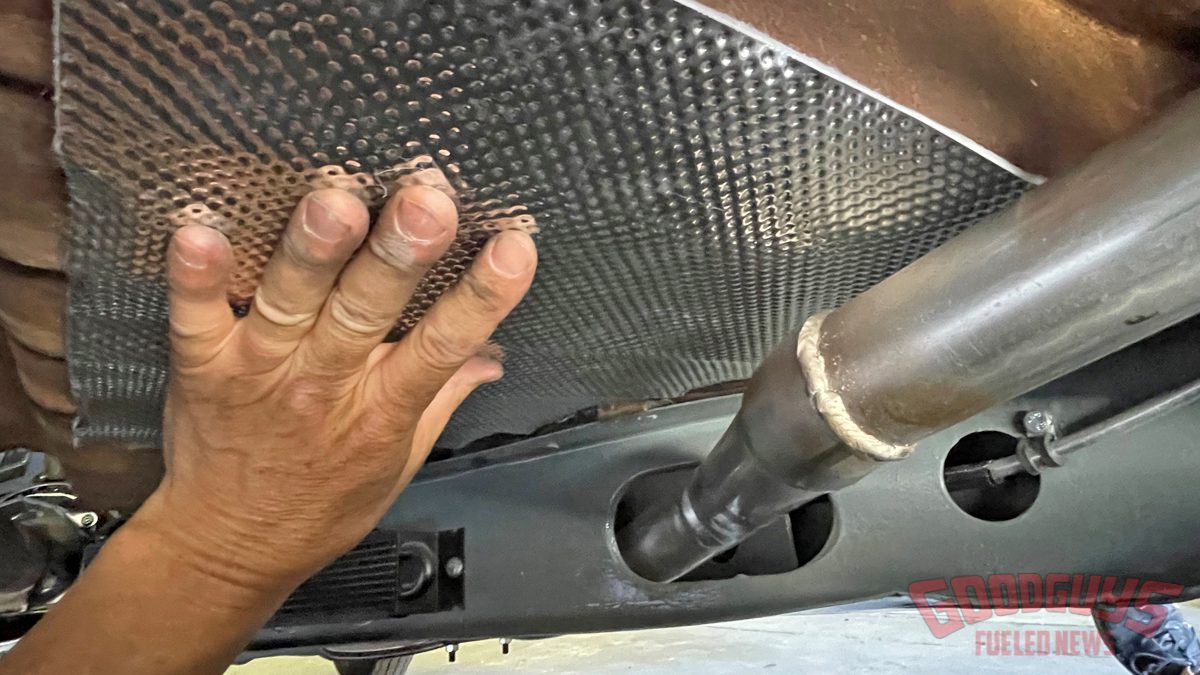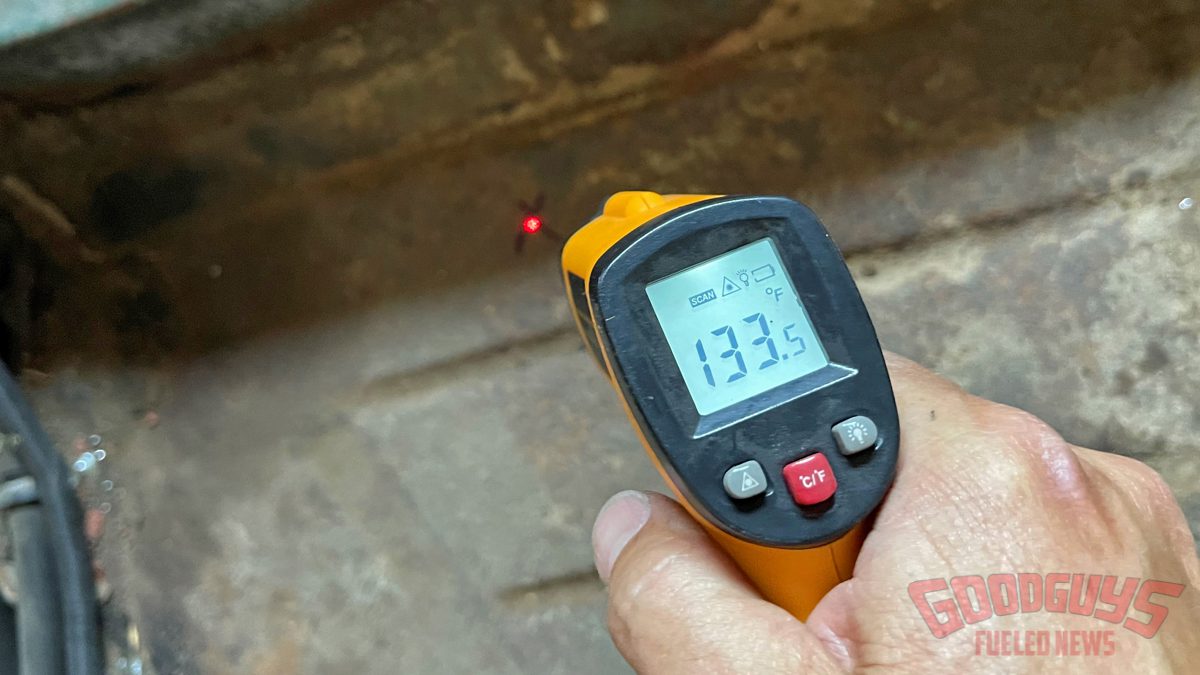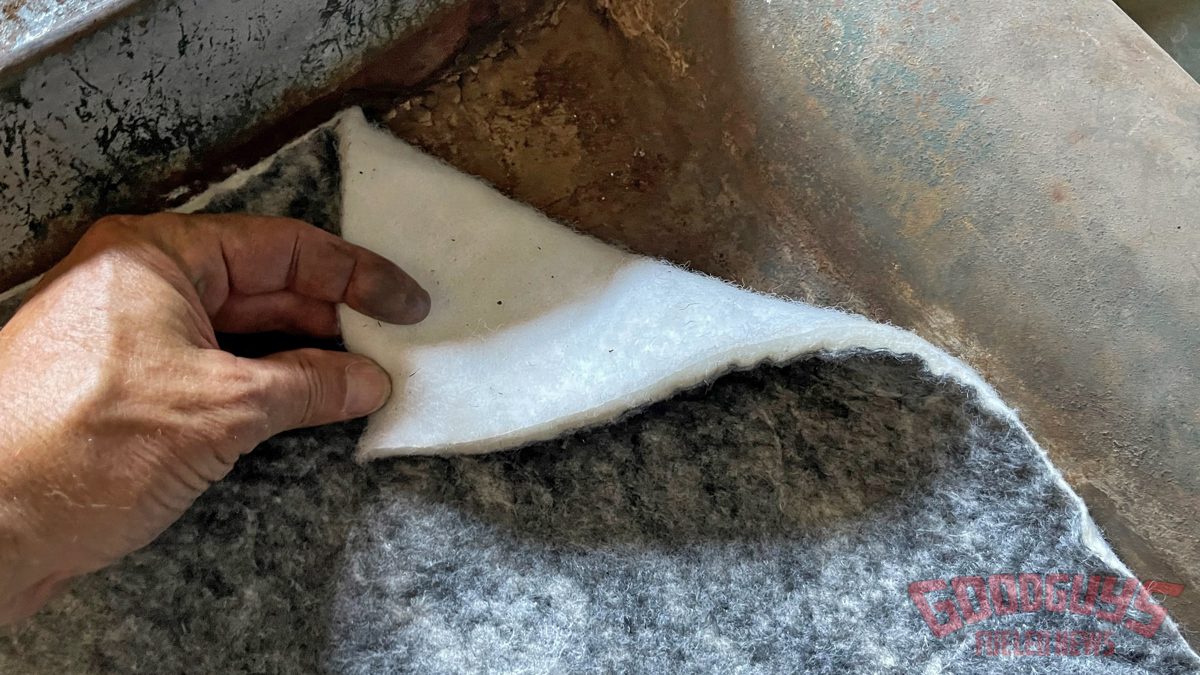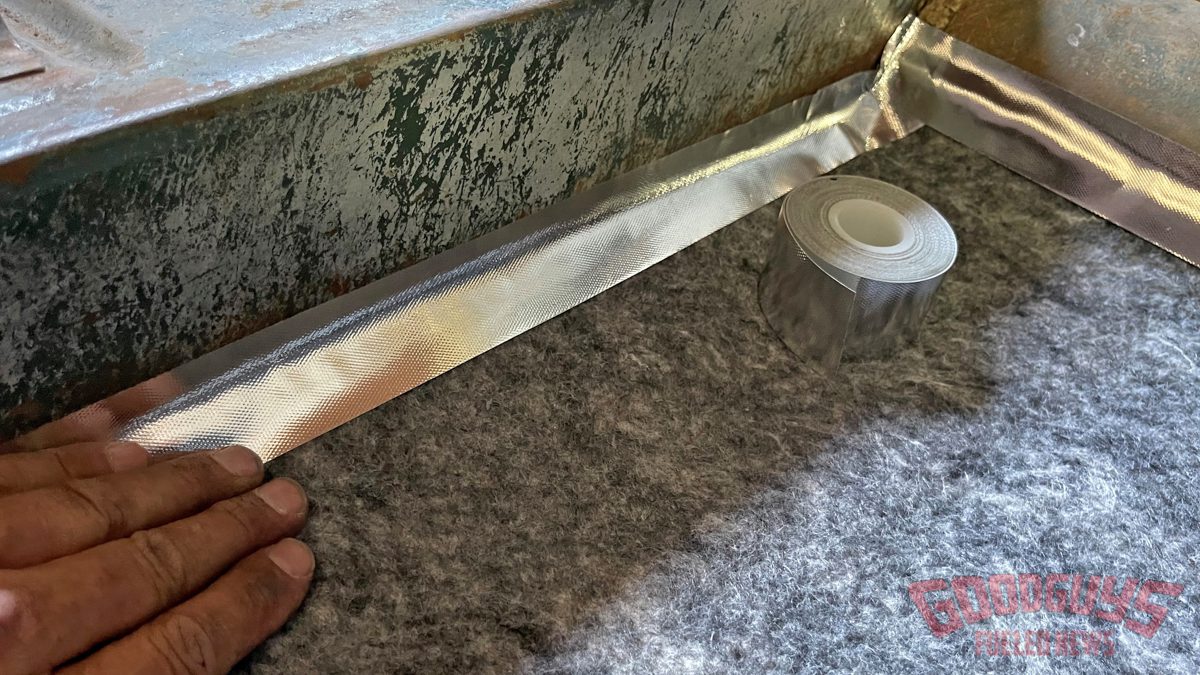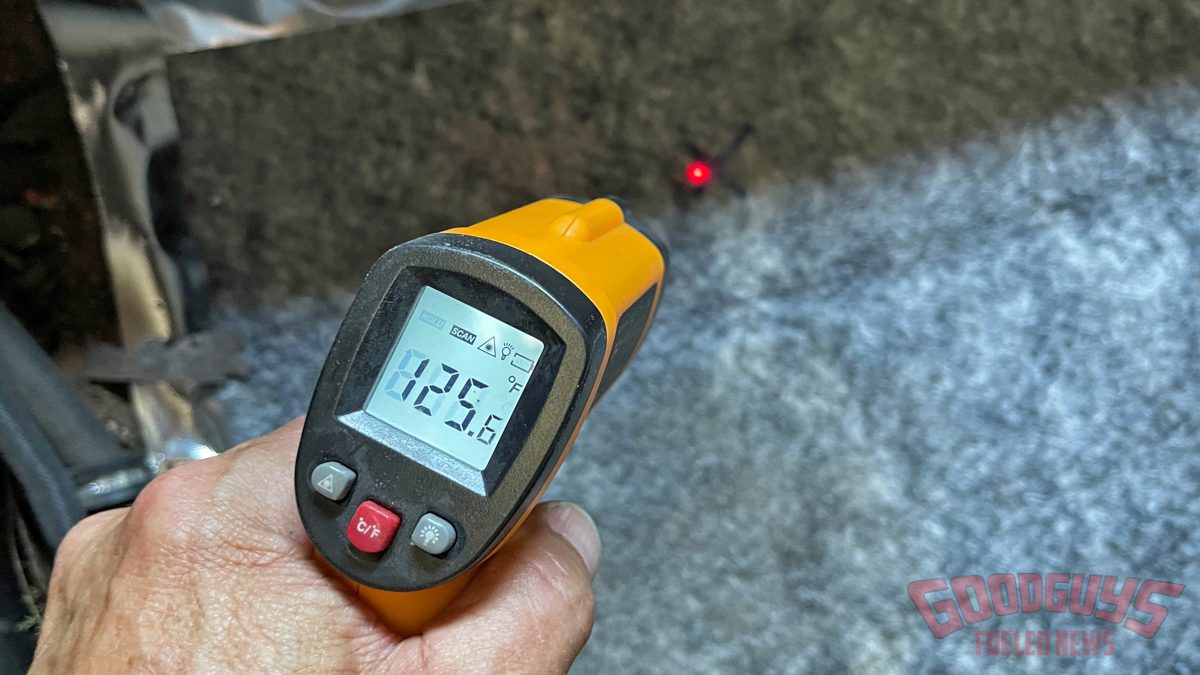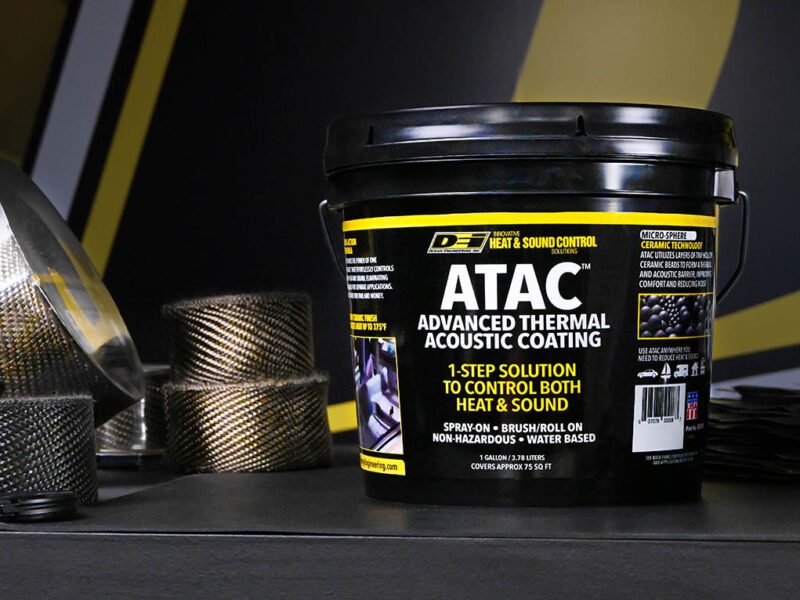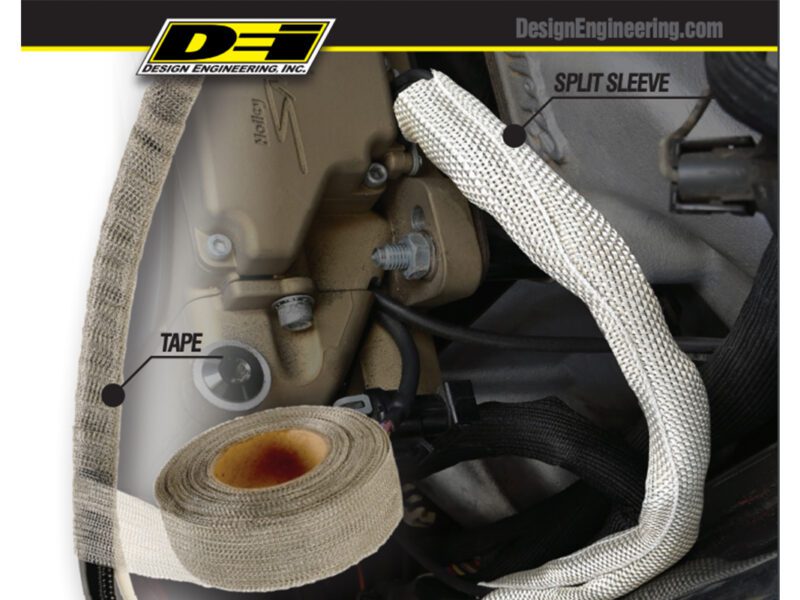Blocking Heat – DEI Thermal Barriers are Effective and Easy to Install
How long have you put up with toasty-warm feet and legs due to heat radiating through the floor or transmission tunnel? We set out to see how much heat we could block with a little help from DEI – Design Engineering Inc.
One of the most popular products used in new ground-up vintage vehicle builds these days are noise damping panels combined with materials to reduce heat transfer. In fact, several of the builders we spoke to while researching the latest heat and noise blocking products said that taking steps to lower noise and heat wasn’t even an option, but rather a must-have on every project.
After learning a little more about the number of noise and heat blocking products available, we thought it would be interesting to check out a couple different thermal blocking materials. We knew of a ’40 Ford sedan project with no carpet and noticed that the floor was scorching hot to the touch due to the exhaust system being routed through the chassis with the pipes close to the bare steel floor.
Design Engineering Inc. offers a catalog of thermal barriers and noise damping products and their newer Floor & Tunnel Shield II was recommended by several builders. This material is only 3/16-inch thick with an effective insulating material covered by a textured aluminum face to deflect heat. For inside the car they offer several lightweight insulation materials that install under the carpet (aptly named Under Carpet Lite). Two completely different products with different uses but the same goal – reducing heat.
Note that the ’40 is not quite road worthy, but with no carpet and a dual exhaust, it presented a perfect opportunity to set up an A/B test. Our test was to leave the driver’s side as-is for a constant while installing the DEI materials in two steps on the passenger side. The floor temperature was reported with a cheap infrared temp gun. Again, not quite a scientific study, but enough to provide some before-and-after results.
The mild small-block V8 was run for over 15 minutes at about 1,000rpm, and then we noted the temperature of the floor, which was extremely hot to the touch and ended up getting to well over 180 degrees! The two DEI materials knocked the floor temperature down by over 60 degrees! If we were to cover more of the external floor surface and insulate the cabin floor completely, there would be an even bigger drop in temperature.
This little experiment really opened our eyes to how easy it is to make our interiors a lot more comfortable no matter what you drive. Be sure to check out our guide to heat shielding and sound deadening to learn more about what products are available to help cool and quiet your hot rod.
- To get a baseline, we let the small-block Chevy run at about 1,000rpm for 15-20 minutes. To keep things consistent, we put an X on the rear floor pan on both sides of the tunnel to have a target to measure with an infrared heat gun – 187 degrees on the passenger side, 188 degrees on the driver side.
- The first layer of heat defense we added was DEI’s Floor & Tunnel Shield II. This lightweight, stick-on material features an 1/8-inch composite glass-fiber core bonded to an embossed 10-mil aluminum face that reduces thermal transfer from the exhaust pipes to the floor.
- The 3/16-inch thick material can be cut with scissors and installs easily with its super sticky adhesive backing.
- The adhesive backing can be applied to painted surfaces, metals, and fiberglass, plus it is very pliable to form over contours in the floor. It is designed to handle wet roads, winds, and life under the car, but can also be applied to firewalls, gas tanks, and pretty much anywhere else to block the heat.
- With the Floor & Tunnel Sheild stuck to the floor, the engine was run above idle until the driver’s side floor reached its previous temperature (188) then we checked the passenger side which read 133 degrees – a difference of over 50 degrees!
- The next product installed was DEI’s Under Carpet Lite, a ½-inch thick composite material that added another layer of thermal insulation. The material works to lower temps in the summer months and will protect against cold air in the winter.
- The Under Carpet Lite easily forms over the floor or tunnel and also helps dampen the transfer of road noise. This material can also be applied over DEI’s Boom Mat, the vibration and sound damping butyl material, but heat was the main focus for our application. DEI’s Cool Tape was used to hold the seal and hold the insulation in place (an adhesive spray can also be used).
- Once again, the engine was fired up and run for about seven minutes, enough for the driver’s side (the control side in this A/B experiment) to reach 188-degrees. With the insulation in place, the temperature surface was down to 125 degrees. Adding carpet will drop the floor temperatures even more.
Test Notes
It is important to note that this story is aimed at showing how easy and effective it is to block significant heat from entering the passenger compartment. Measurements were taken with a no-name infrared thermometer on a 95-degree day. (In short, there are better devices, such as a thermal probe, for more accurate readings.) Following the manufacturer’s recommendations and installation procedures will likely produce even better results.

